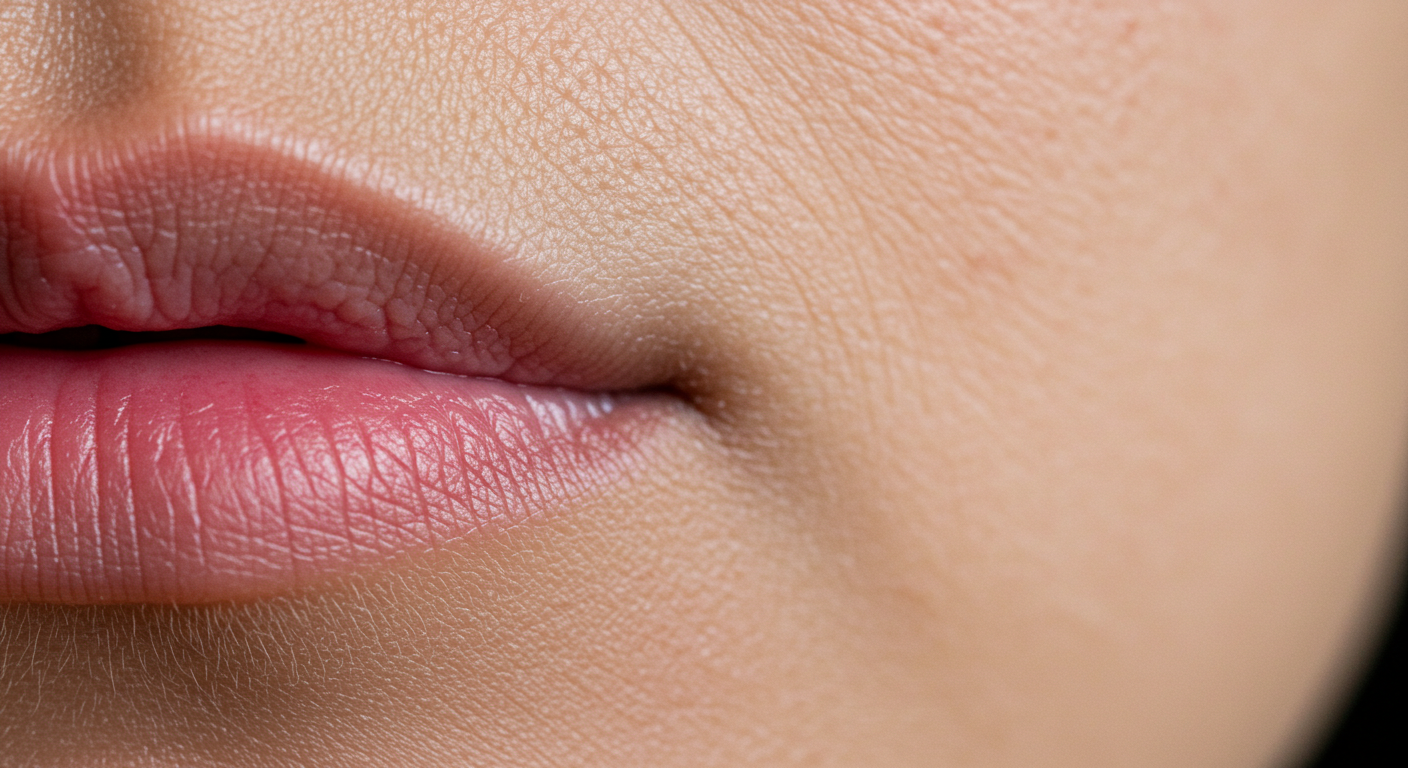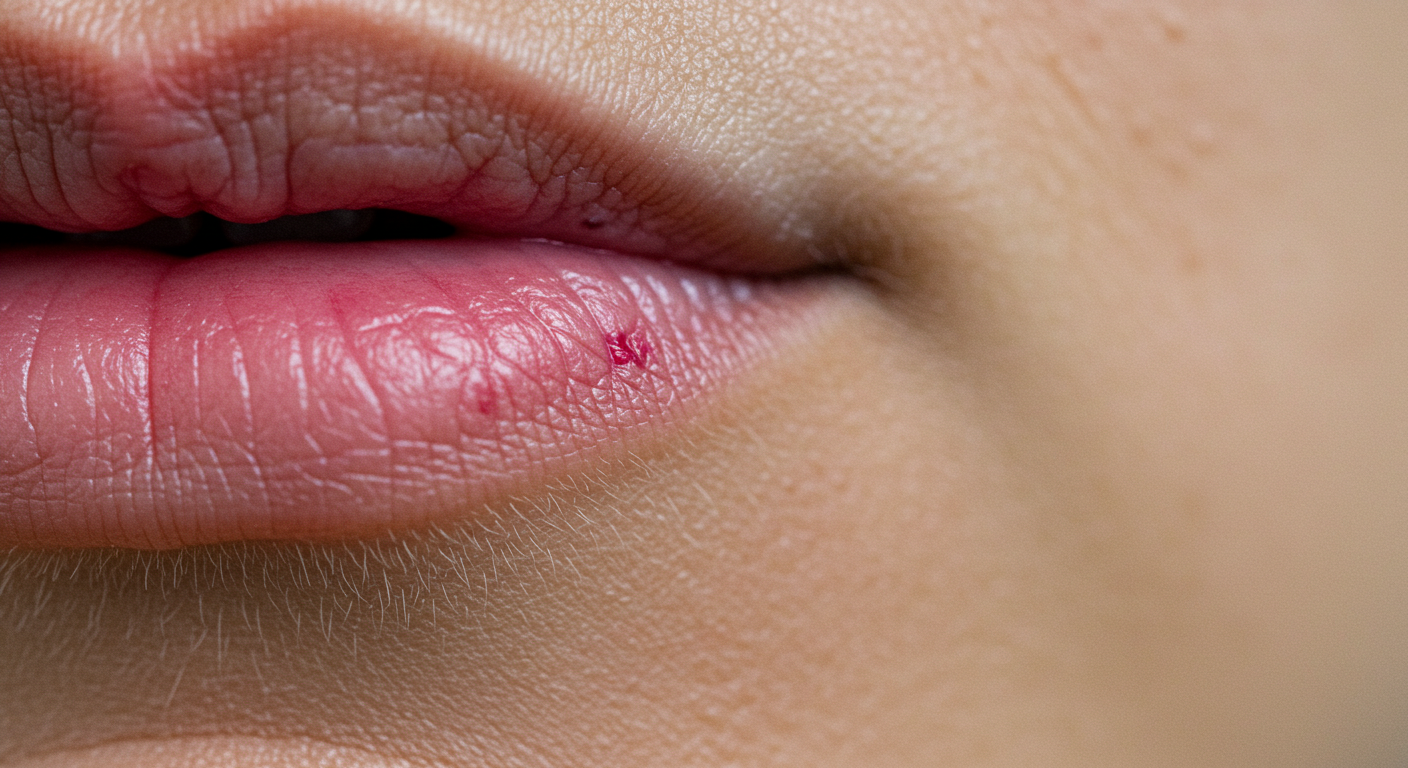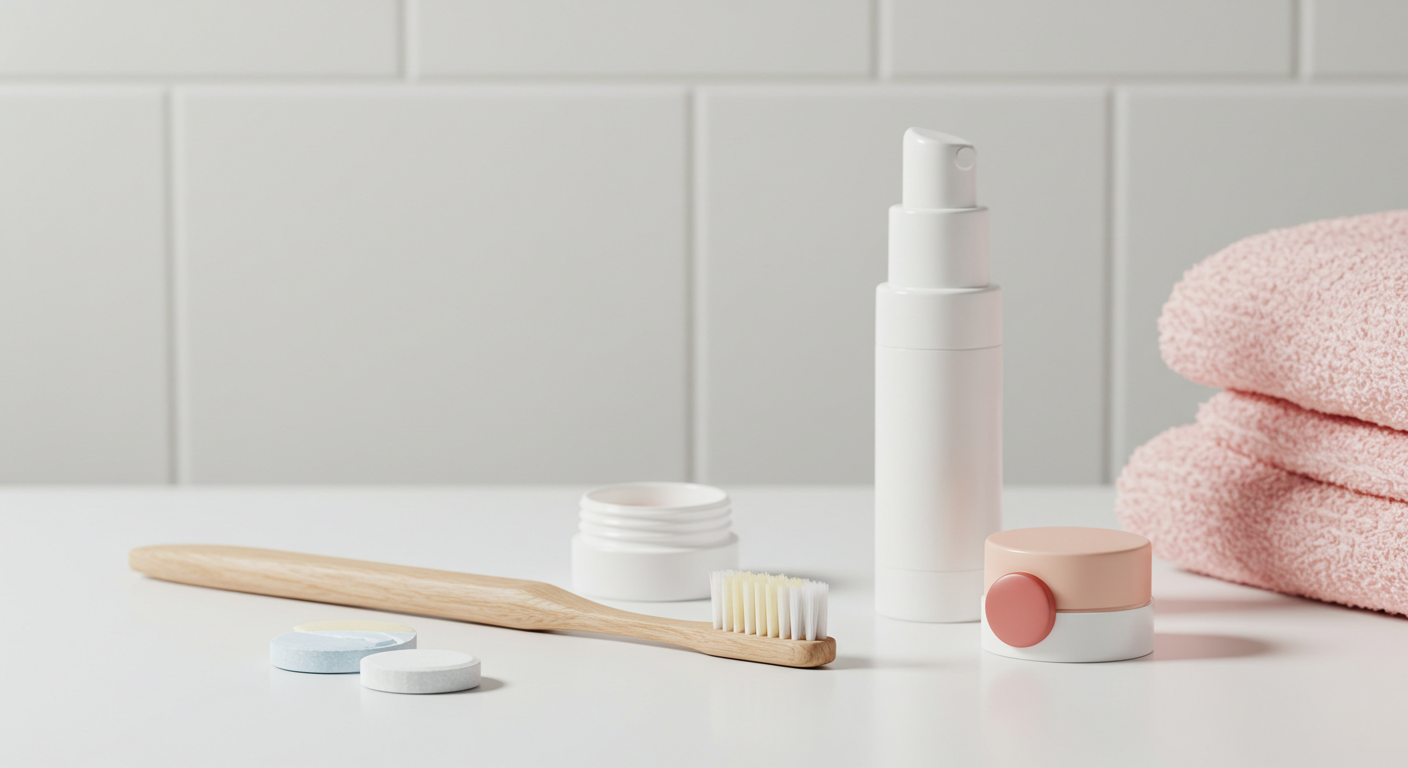Contents

Angular Cheilitis: Understanding Causes, Symptoms, and Effective Treatments
Do you suffer from irritation, cracks, or burning sensations at the corners of your mouth? These symptoms suggest angular cheilitis. While rarely serious, this inflammation of the corners of the lips can become particularly bothersome and persist if not treated correctly.
In this article, we explore in detail the multiple origins of angular cheilitis, its characteristic manifestations, diagnostic methods, the most effective treatments, and the best preventive strategies to avoid recurrence.
What is Angular Cheilitis? Definition and Symptoms
Definition
Angular cheilitis is a localized inflammation at the corners of the mouth that can affect one side or, more commonly, both corners of the lips simultaneously.
This condition manifests through several characteristic signs:
- Redness and inflammation: The corners of the lips become red and irritated, sometimes slightly swollen.
- Cracks and fissures: Small cuts form, making mouth movements painful.
- Unpleasant sensations: Pain, burning, or constant discomfort, especially when speaking or eating.
- Yellowish crusts: Small scabs or areas of peeling skin may appear.
- Occasional bleeding: The fissures may bleed during mouth movements.
- Itching: A sensation of itching may accompany the inflammation.
- Whitish deposit: Sometimes visible, this sign often suggests a fungal infection.
The Causes of Angular Cheilitis: Why Does It Appear?
Identifying the origin of angular cheilitis is crucial for effective treatment. Several factors, often combined, can be responsible:
1. Microbial Infections
Persistent moisture at the corners of the lips creates a favorable environment for microbial growth:
- Fungal Infections: Candida albicans is the most frequently involved microorganism. Naturally present on our skin, it can become problematic during an imbalance (excess moisture, weakened immunity, antibiotic treatment).
- Bacterial Infections: Bacteria such as Staphylococcus aureus or certain Streptococci can also cause or complicate existing angular cheilitis, particularly in children.
2. Mechanical and Environmental Factors
- Saliva Stagnation: This is a key element. Salivary maceration in the commissural folds promotes inflammation. This phenomenon is exacerbated by:
- Deep folds at the corners of the lips (often related to aging).
- Poorly fitting or worn dentures, or a decrease in dental height altering the bite.
- Chronic Irritations:
- Habit of frequently licking the lips.
- Thumb sucking in children.
- Exposure to cold or dryness that weakens the lip epidermis.

3. Nutritional Deficiencies
A lack of certain nutrients can weaken the skin and mucous membranes:
- Iron: Iron deficiency anemia increases the risk of angular cheilitis.
- B Vitamins: Mainly B2 (Riboflavin), but also B3, B6, B9, and B12.
- Zinc: Essential for skin immunity and healing.
Although rarely the sole cause, nutritional deficiencies create a favorable environment, particularly in the elderly or malnourished.
4. Oral Health Issues
- Poor oral hygiene promotes microbial proliferation.
- Poorly maintained or ill-fitting dentures can harbor germs and irritate the corners of the mouth.
5. Underlying Medical Conditions
- Uncontrolled diabetes (promotes infections).
- Immune deficiency (HIV, immunosuppressive treatments).
- Sjögren's syndrome (causing dry mouth).
- Certain inflammatory digestive diseases.
- Side effects of medications (antibiotics, corticosteroids, isotretinoin).
- Allergic reactions to certain cosmetics or toothpastes.
Diagnosis: How to Identify Angular Cheilitis
The diagnosis is primarily based on clinical examination and the patient's history:
- Visual Observation: The healthcare professional recognizes the characteristic appearance of the lesions.
- Medical History: Identification of risk factors (dentures, habits, medical history, current treatments).
- Microbiological Swab: A swab may be taken in case of doubt, treatment failure, or recurrence to precisely identify the involved germ.
Effectively Treating Angular Cheilitis
A comprehensive therapeutic approach combines eliminating the underlying causes with appropriate local care.
1. Treating the Underlying Cause
This is the key to preventing recurrence:
- Adjust or replace inadequate dentures.
- Correct identified nutritional deficiencies.
- Optimize oral hygiene and appliance care.
- Balance diabetes or manage an underlying medical condition.
- Eliminate potentially irritating cosmetic or hygiene products.
- Correct harmful habits like frequent lip licking.
2. Topical Medical Treatments
Prescribed according to the identified cause:
- Barrier Creams: Zinc oxide or petroleum jelly-based to isolate from moisture and promote healing.
- Topical Antifungals: Creams or ointments (miconazole, clotrimazole, nystatin) for Candida infection.
- Topical Antibiotics: Preparations with fusidic acid or mupirocin if a bacterial infection is suspected.
- Combination Preparations: Combining antifungal, antibiotic, and sometimes a mild corticosteroid.
3. Complementary Natural Approaches
These remedies can provide relief but do not replace medical treatment for a confirmed infection:
- Virgin Coconut Oil: Offers hydration and mild antimicrobial properties.
- Medical-grade Honey: Known for its antibacterial and healing properties.
- Pure Aloe Vera Gel: Soothes and hydrates irritated tissues.
Caution: Test on a small area first and consult if there is no improvement within 48 hours.

Preventing Angular Cheilitis: Effective Strategies
To prevent the onset or recurrence of angular cheilitis, adopt these beneficial habits:
- Rigorous oral hygiene.
- Meticulous denture care.
- Lip Protection: Regularly apply a hydrating and protective lip balm.
- Avoid licking your lips.
- Balanced Diet.
- Adequate Hydration.
- Regular dental check-ups.
When to See a Professional
A medical or dental visit is necessary in the following situations:
- No improvement after a week of basic care.
- Severe pain, significant bleeding, or purulent discharge.
- Spreading lesions or the appearance of other oral symptoms.
- Recurrent episodes despite preventive measures.
- Suspicion of an underlying medical cause requiring specific management.
Conclusion
Angular cheilitis is a common but generally benign condition of the corners of the lips. Its effective treatment is based on the precise identification of its causes and their correction. Appropriate local care, combined with optimal hygiene and the elimination of contributing factors, usually allows for a quick and complete recovery.
If symptoms persist despite your care or recur frequently, do not hesitate to consult a healthcare professional for an accurate diagnosis and personalized management.
